| This is a featured article. |
| This article is written from the Real Life point of view |
- "MOM" redirects here. For the official term for the month of August, see Month of Metroid.
Metroid: Other M (メトロイド アザーエム Metoroido Azā Emu) is the eleventh Metroid game, announced by Nintendo at E3 2009 and a collaboration between Team Ninja and Nintendo. An interquel between Super Metroid and Metroid Fusion, the game focuses on Samus' character more than in previous games with an emphasis on the game's storyline. Other M is played with a sideways Wii Remote similar to the NES Controller, while aiming it at the screen switches the view to a first-person perspective similar to the Prime series.
Plot
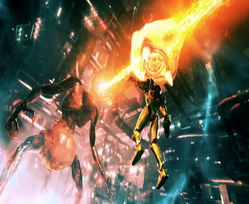
Samus witnesses the death of the baby in a scene from Super Metroid.
The game begins with a dream recounting the climax of Super Metroid, where Samus battles against Mother Brain and watches the baby die. After giving a mission report, Samus departs for space. Weeks later, she picks up a Baby's Cry distress signal from the derelict BOTTLE SHIP. Samus is compelled to follow it.
Soon after landing on the seemingly deserted BOTTLE SHIP, Samus encounters the Galactic Federation 07th Platoon, and is greeted by Anthony Higgs, an old friend from her days in the Federation Army. Leading them is Commander Adam Malkovich, her former commanding officer. Adam refuses to divulge why they are on the station, but Samus decides to stay on board for the sake of the platoon. The team discovers the body of a Lab Worker, and are soon attacked by a collective mass of purple insects. Samus and the platoon work together to take it down.
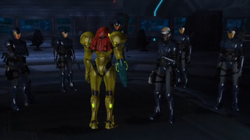
Adam tells Samus the conditions of her cooperation in the mission.
Adam allows Samus to cooperate in their mission, under the condition that she obey his orders and refrain from using certain weapons and equipment until he authorizes them. He orders Samus to find the Exam Center in Sector 1. On her journey through the tropical area, she encounters a small, furry creature that begins to follow her.
Samus later reaches the Exam Center, and finds James Pierce doing something under the desk of the main computer. The rest of the platoon then arrives, although Lyle Smithsonian is missing. Investigating, Samus discovers the cybernetic body of a Space Pirate Zebesian with the Galactic Federation insignia on its chest. The platoon discovers that the purpose of the BOTTLE SHIP was to conduct research on bioweapons, a practice that is illegal within the Federation. They learn the person in charge of the project was Dr. Madeline Bergman.
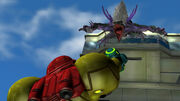
A large purple creature launches itself at Samus from the Exam Centre's tower.
Outside, the Platoon is attacked outside by a large lizard-like creature, who viciously attacks Samus when she comes to assist them. After being wounded by Anthony Higgs' Plasma Gun, the creature flees. The group discovers the bodies of Lyle and the skin of the creature Samus encountered, "Little Birdie". She is ordered to follow the lizard creature.
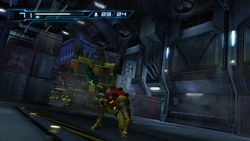
A Federation Trooper operating a large Ferrocrusher machine attacks Samus in the Cryosphere Warehouse.
Midway into her search for the Mystery Creature in Sector 3, Samus is redirected to the icy Sector 2 to search for survivors. While there, she discovers the body of Maurice Favreau and spots a young woman in the Materials Storehouse, who flees. Samus gives chase and tries to talk the woman down. The woman refuses to cooperate, fearful that Samus is here to silence her, and implies that Maurice was killed by a fellow soldier. The two are then attacked by a soldier wearing a Galactic Federation Power Suit driving an RB176 Ferrocrusher, and the woman is separated from Samus. Samus destroys the machine, but the operator escapes.
Returning to Sector 3, Samus concludes that there is a traitor within the 07th Platoon, and nicknames him "the Deleter" until she learns his true identity. Back in Sector 3, Samus encounters Anthony. He explains he was sent to open the magma-eruption port in the Geothermal Power Plant, along with the rest of the Platoon. However, none of his comrades showed up at the rendezvous point. Parting from Anthony, Samus continues until she finds the empty husk of the lizard creature. Samus enters the dimly lit Geothermal Power Plant and reunites with Anthony. The monster, now winged, ambushes them. Samus, confronting it alone, opens the magma-eruption port and brings light into the room. To her horror, the creature is revealed to be none other than her nemesis Ridley, whom she believed to be permanently killed with the destruction of Zebes. Overcome by posttraumatic stress disorder, Samus is unable to save Anthony when he is seemingly killed by Ridley. Samus's anger empowers her to battle Ridley once again. He escapes.
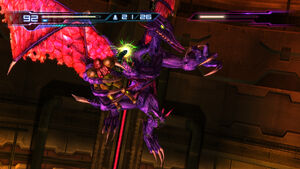
Samus is forced to battle Ridley again.
Leaving the Pyrosphere, Samus realizes she cannot contact Adam, and fears that the Deleter may be or already has targeted him. She then spots one of her comrades entering Sector 1. Samus pursues him to the Bioweapon Research Center, where she instead finds the young woman again. After calming down, the woman introduces herself as Madeline Bergman. She reveals that the Federation was gathering Zebesians and other deadly organisms to enhance them through cybernetics to serve as a special-forces unit for the Federation, modelled after the original Space Pirates. The project became disastrous when a "certain presence" (Samus assumes she is referring to Ridley) caused the life forms to suddenly become aggressive beyond their control.
Madeline reveals more; the scientists were propagating Metroids as well, cloned from remains of the baby found on Samus's Power Suit after her return from Zebes. They unknowingly recreated Ridley as well. Madeline also reveals that an AI named "MB", modelled after Mother Brain, had been created for the purpose of controlling the Metroids. MB and the Metroids were stored in Sector Zero. Madeline goes on to say that Adam is behind Project Metroid Warriors. Samus leaves for Sector Zero. Afterward, Madeline is approached by the Deleter, who shoots her.
Arriving at the entrance to Sector Zero, Samus encounters a Baby Metroid that reminds her of the hatchling from SR388. Before she can kill it, she is struck from behind, disabling her Power Suit. Samus recognizes her attacker as Adam, who kills the Metroid just as quickly. Adam claims that Metroids in Sector Zero were genetically manipulated to be unfreezable, while assuming that infant Metroids have not grown into this invulnerability. He also explains that he had written the Metroid report against the idea of using Metroids; although the Federation agreed, a small faction of the Federation went ahead with the project.
Adam reveals that he plans to enter Sector Zero to set off its self-destruct mechanism and cause it to detach from the BOTTLE SHIP. He shot Samus to render her unable to storm past him. Before leaving, he orders Samus to locate a survivor in Room MW, to divert the BOTTLE SHIP off an intercept course with Galactic Federation Headquarters and to defeat Ridley. Despite her pleas, Adam leaves Samus for Sector Zero, which detaches with him inside and explodes.
Swearing to finish the mission, Samus returns to the Bioweapon Research Center, and finds the body of James Pierce, as well as the mummified remains of Ridley. She later discovers the survivor Adam mentioned, who opens a large, dark room. A Queen Metroid emerges from the chamber. Samus faces the Queen in a difficult battle when the ship's emergency brakes suddenly become active. Samus resorts to an old tactic and grapples into the Queen's mouth to obliterate it with a Power Bomb through its stomach.
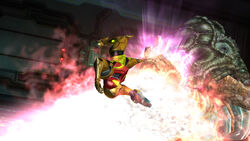
Samus dodges the Queen Metroid's flames.
The survivor absconds. Samus chases the woman down, who identifies herself as Madeline Bergman. She explains that the woman Samus met earlier was actually MB in an android form. At first, the android displayed amazing skill and learning capability, and developed a consciousness of sorts with the Metroids and a mother-daughter relationship with Madeline, but soon became self-aware. She began to disagree with the scientists, to the point where they thought it was necessary to alter her programming. Feeling betrayed by the scientists and Madeline, who did nothing to help her, MB unleashed all of the experiments to run rampant throughout the station, leading to the current state of the BOTTLE SHIP.
Samus and Madeline are then confronted by MB herself. Madeline attempts to negotiate with MB, who insists that all humans should be judged. MB is then frozen by a group of invading Federation Marines, but she quickly thaws off. MB summons the BOTTLE SHIP's most dangerous creatures to attack. Madeline stops the battle by freezing MB again. On The Colonel's orders, MB is killed by the Marines. Madeline, devastated and heartbroken, is quickly restrained. The Colonel compliments Samus' efforts but orders a Marine to escort her back to her ship. Much to everyone's surprise, the soldier reveals himself to be Anthony. He and Samus are thus allowed under the Chairman's orders to take Madeline with them. The trio leave for Galactic Federation Headquarters. On the journey home, Samus questions whether MB was truly evil all along, or misunderstood.
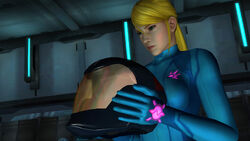
Samus recovers Adam's helmet.
Days after the incident, the Galactic Federation decides to destroy the BOTTLE SHIP by utilizing its self-destruct mechanism. Before this, Samus returns to recover an important treasure, Adam's helmet, which she finds in the Control Room after defeating Phantoon, a boss that appeared in Super Metroid. The ship's self-destruct sequence is activated shortly afterward. During a countdown, Samus quickly escapes the BOTTLE SHIP with the helmet before it is destroyed.
The events of Metroid Fusion follow.
Development
| “ | If I can, I want the series to keep going. From here on, I think I want to develop Samus as a character. I might also create a story going back to the past of Adam and Samus. | „ |
—Sakamoto seemingly foreshadowing Other M (and possibly Metroid: Zero Mission) Nintendo Online Magazine (March 2003).[8] | ||
Yoshio Sakamoto has said that the primary focus of the game was to show Samus' personality, since the Prime series left many players with their own idea of who she was, and he wanted her to be consistent for any future titles. The game was also intended to seamlessly blend cutscenes with gameplay. As a result, the story and gameplay were developed simultaneously. Sakamoto said that he sees the game as another 2D Metroid game due to its simple controls and "elegant" gameplay, and calls it an extension of Metroid Fusion. [2]
He claimed later in an interview that he regretted absolutely nothing about the project and felt that very little could have changed or been done better. It entirely reflected his original vision of the game. He was concerned about how the fans would take the Search View feature's lack of movement, but he didn't want to add the confusion of figuring out where players were after switching between the two views; he anticipated backlash but felt it was still the right way to go [3].
Many aspects of the original Metroid game came about due to technical limitations—he cited the Ice Beam as an example. They couldn't add any major changes to the code for upgrades, but simply changing enemies' color and collision settings led to one of the most iconic and dynamic features in the series. He sought to recreate these limitations in Other M's development by forcing the use of only one Wii Remote, hoping this would lead to inventive workarounds for issues rather than just powering through them like other companies do.
Gameplay/differences from past games
Samus Aran does not collect her Power-ups in this game as in previous games. Rather, Adam Malkovich will authorize her to use certain power-ups, as she has apparently retained all her items from Super Metroid rather than losing them prior to or at the beginning (except for the High Jump Boots and the Spazer Beam, which do not appear in the game at all). Some "new" power-ups, such as the Energy Parts, E-Recovery Tanks and Accel Charges, are collected in a more traditional manner, however. [4]
Like on the Ceres Space Colony in Super Metroid, Doors no longer need to be shot with a beam to open; they open automatically on approach.
If Samus is hit by an attack that would normally kill her, instead of dying, she will be put in a fatal state where her energy count will constantly flash 1 and 0. If she gets hit once more Samus will die. This does not apply to Hard Mode, however.
The pause menu, in addition to the traditional map and Samus Screen, features a new Characters sub-menu, where Samus can view details on most of the people she has encountered on her mission.
Enemies do not drop health and ammo, rather Samus generates them herself through a new game mechanic called Concentration. All missiles can be regenerated by holding the Wii Remote vertically and holding the A button down. If Samus' health is 24 or less with no energy tanks full, she can replenish one or more energy tanks (based on the number of E-Recovery Tanks she has) by holding the A button down longer after Missiles are regenerated. Through an auto-aim firing system, Samus will automatically target enemies with her weapons fire in third-person mode.
There are four upgrades (three being new items) in the game. The upgrade that was previously used in other installments are the Seeker Missiles. The newer items are the Diffusion Beam which appears to be similar to the Diffusion Missile in Metroid Fusion, the E-Recovery Tank, which increases the number of energy tanks filled when continuing after death or using the Concentration ability, and the Accel Charge upgrade, which increases how quickly Samus can perform a charge shot or Super Missile.
Besides the new upgrading system, Samus's character model has also changed as well. The Power Suit is now yellowish in color (like in Super Metroid), with a redder helmet, and Samus's face cannot be seen through the greenish glow emitting from her visor, unless in a cutscene. Samus only seems to activate the greenish glow during cutscenes when attacking or when she is under attack. The Gravity Suit appears, but no longer alters the colour of the suit and instead adds a purplish glow and makes the lights on the suit pink. It has the same use as other games. Damage reduction returns, having been missing in the last Wii Metroid game, Metroid Prime 3: Corruption.
Hard Mode is also different in this game. It can only be obtained by beating Normal Mode with 100% item collection, which requires coming back and defeating the optional boss after the credits. The enemies in Hard Mode are identical to Normal Mode in that their attacks are the same and the damage output has increased, but they take no less damage from Samus' attacks. However, Samus is unable to acquire optional pickups such as Energy Tanks, Missile Tanks and Accel Charge upgrades, which limits her to 99 Energy and 10 Missiles for the duration of the mission. Beating Hard Mode does not unlock any rewards, and the post-credits epilogue cannot be played. The game is not saved after MB's death, so loading a Hard Mode save after seeing the credits will place Samus at the last time she saved before the end of the game. If the player saves as often as possible, that means the save will be right before the Queen Metroid battle.
Finally, Samus has learned the ability to dodge when sensing an incoming attack, called SenseMove. If an attack is about to hit Samus, pressing any direction on the control pad will cause her to dodge in the pressed direction, making her invulnerable for the duration of the dodge. If the fire button is held down during this time, she can also instantly build up a fully charged shot while dodging. SenseMove cannot be used to dodge all attacks; some must still be jumped or otherwise avoided.
New fighting style seen in promotional images.
Metroid.jp revealed a small teaser site for the game on January 29, 2010, that consisted of an image from the trailer, a new song, and Samus speaking in Japanese, "A dream. It's as if I was watching a playback of a tragedy that really happened."[9] Metroid.com has also since been updated with the English-speaking line, "A dream. I had been reliving the tragic moments of my recent past." [10] A short video titled Teaser Movie, with no actual gameplay, was added to the site on March 2, 2010. A gameplay movie was also added to the site in late March 2010, showing off several features. On June 3, 2010, the entire Japanese site got revamped. On 21 August 2010, the English site was also updated to include the same features as the Japanese site. Links to the main Nintendo website were also present.
Reception
Early reviews of the game were mostly positive, with some negative/mixed reviews.
- Metroid: Other M received a score of 8.5 out of 10 from IGN.[11]
- X-Play gave Metroid: Other M a 2 out of 5, saying that Samus's character was unacceptable and the controls were too clunky.[12]
- GameInformer Australia gave Metroid: Other M an 8,[13] but GameInformer US gave it a 6.25 out of 10.[14]
- GameSpot gave Metroid: Other M an 8.5 out of 10.[15]
- GameTrailers gave Metroid: Other M an 8.6 out of 10.[16]
- GamesRadar gave Metroid: Other M a 7 out of 10 in its Super Review.[17]
- Joystiq gave Metroid: Other M 4.5 stars out of 5.
- The Official Nintendo Magazine gave Metroid: Other M 91%.
- Nintendo Power gave Metroid: Other M an 8.5 out of 10.[18]
- Other M received a score of 5 out of 10 from Thunderbolt, which criticised the "linear" gameplay and called the plot "cliche" and "predictable". [19]
Much of the criticism was aimed at the long unskippable cutscenes (which actually could be skipped in the final version of the game after a few seconds from the beginning of the cinematic by pressing the - button, but only after beating the game at least once), poor script and plot writing, the scene of Samus's reaction to Ridley compared to her attitude in previous games, and some overly melodramatic dialogue. However, some reviews praised these qualities and did not view them as negative.
Particular criticism was directed toward the Ridley scene, which confused many. Her posttraumatic stress disorder kicks in upon seeing Ridley again on the BOTTLE SHIP. This is odd given that if the chronological order of the games is taken into account, this would be the seventh time Ridley has been encountered by Samus after he killed her parents: twice in Metroid: Zero Mission (albeit one being a robot built in Ridley's image), Metroid Prime, twice in Metroid Prime 3: Corruption, Metroid: Samus Returns, and Super Metroid. Her behavior in this scene is not consistent with that of the other games, where she remains calm and in control of her actions and her Power Suit, and many complained about this. Even the Metroid manga, the first source to hint at Samus's PTSD and the basis for the scene, had Samus overcoming her PTSD and even mocking Ridley nearing the end of the manga. The most likely explanation for the reaction is that she presumed him permanently dead following Super Metroid since his body was on planet Zebes when it exploded, not thinking the Galactic Federation would use the cells found on her suit to create another Ridley on the BOTTLE SHIP.
Others criticized the authorization system for making the game significantly more linear than previous titles and preventing sequence breaking. They were also annoyed that Adam inexplicably restricted the use of the non-offensive Varia Feature, Gravity Feature and Grapple Beam upgrades when they were first needed, with the Varia being authorized after Samus has taken a long trek through several superheated rooms, which she would have been protected from by the Varia Feature (however, the amount of energy she loses in the heat is dropped to one unit per second, instead of the traditional five). Additional criticism was directed at the authorization system's troubling implications for the personalities of Samus and Adam. Many took issue with Samus' willingness to restrict her abilities, in particular her choice to restrict abilities that Adam had not even directly forbidden the use of. Considering Adam's derisive and secretive behavior towards Samus, critics felt that Samus' obedience was uncharacteristic and unreasonable. Similarly, Adam's tendency to authorize upgrades well after they were necessary could be perceived as being negligent, cruel or even abusive. All of this made it very difficult for many players to reconcile this portrayal of Adam with the noble Commander whom Samus remembered in Fusion.
Several also criticized the Samus-Adam Relationship that acted as a key part of the plotline, in particular how it was portrayed. Aside from the bits covered with the critisms of the Authorization feature, there was also the fact that, due to how Samus viewed Adam as a father figure, some of the thoughts and actions Samus had towards Adam came across as a warped version of an Electra Complex (where a girl is sexually attracted to her own father), and that in the scene where Adam sacrifices himself to stop the Ice-resistant Metroids, he proceeded to shoot Samus in the back and have her linger long enough to nearly put Samus at very grave risk against a Baby Metroid before freezing the latter. Although Metroid Fusion did imply to some extent that Samus had significant respect for Adam, it did not directly state she viewed him as a father figure. In addition, the flashback for Samus's departure indicated that Adam was cold to her simply because she left his command out of guilt for needlessly complicating a tough choice he had to make regarding his brother Ian Malkovich (a stark contrast to the 2002 Manga equivalent to that scene where Adam if anything was the one suggesting to Samus that she leave the Federation military specifically because being in it hampered her potential). It was also criticized largely because it didn't match up with Samus's recollections of Adam in Metroid Fusion, and that the focus on the relationship seemed to trivialize Samus's backstory of being raised by the Chozo after the events at K2-L. It is to be noted that the overall elements of Samus's relationship with Adam, including the authorization bits, were meant to be reflective of Japanese culture, in particular, filial piety.
Arguably the most critically panned element of the game was its depiction of Samus herself, which was found by most to be too inconsistent with how she had appeared in all previous games. Players were shocked to discover the Samus in this game was not as independent or strong as she had been in previous and subsequent games, and experienced much self-doubt and followed Adam's orders far too willingly - something no veteran bounty hunter (let alone Samus herself) would ever do. Her voice actress, Jessica Martin was also criticized for her "droning" monologues and bland voice when Samus is narrating. In addition, she also at one point mentions the idea of taking orders being exhilarating, when in the intro for Metroid Fusion, the game that first alluded to Adam and his ties to her, she explicitly made clear that she was not fond of taking orders (especially from a computer) and only did so as a condition for taking the ship after her near-death experience.
The game was also accused of sexism, by making Samus' character more appealing to Japanese males by stereotyping her as a more "perfect" woman: timid, weak, conventionally attractive and submissive. Camera angles were accused of "male gaze" cinematography, and making Samus' body proportions too large (particularly her hips, which were almost disproportionate). These accusations were additionally backed up by the fact that all of the females in the game wore high heels for no apparent reason - a choice that was especially nonsensical for Samus, considering her high-activity line of work and the armor she wears over them (ironically, when the Zero Suit was first unveiled in Zero Mission, the concept art had a note from Yoshio Sakamoto specifically stating not to include high heels to the design). Motherhood is a recurring theme in the game, but it has been complained that it shows up too much, most notably in Samus' incessant references to the baby (especially considering that in Super Metroid, she was not noticably attached to the hatchling and simply called it the "Metroid larva"), but also in that the other main female characters show similar motherhood complexes.
Gameplay-wise, the game was criticized for eliminating basic elements of the franchise such as pick-ups and adding new ones like SenseMove, which many players felt took away any kind of challenge by making virtually every attack relatively easy to dodge. In stark contrast, Search View was criticized for making it too easy to get hit due to fixing Samus on the spot, as well as being the only way for Samus to use her Missiles.
The game was generally positively received by critics, and most reviews believed that it was a good example of the traditional Metroid formula, although it did not have as much impact as previous groundbreaking titles. Despite the mostly positive critical reviews, Metroid: Other M ranks as one of the lowest-rated Metroid titles, with an average score of 79% [20][21] (tied with Metroid Prime Pinball and second only to the Metroid Prime: Federation Force). It has been featured in many worst/not recommended game of the year articles.[22][23][24][25][26] As a result of the sales of Other M falling quite short to Nintendo's estimates (they planned to sell millions of copies by the end of 2010), Nintendo of America president Reggie Fils-Aime wanted to know from fans what went wrong with Other M.[27]
In a September 2011 interview with G4 TV, regarding of Ninja Gaiden 3, Other M producer Yosuke Hayashi explained that the game's story was entirely written by Yoshio Sakamoto, not Team Ninja:
| “ | The story for Other M was definitely the product of Mr. Sakamoto at Nintendo. We definitely worked with them on the project, but that was all him. [...] There are definitely things we learned from Other M by working with Mr. Sakamoto and with Nintendo that we’ve applied to the NG development. | „ |
—Yosuke Hayashi[28] | ||
As of March 2014, Metroid: Other M was one of the three games in the series to not reach 1 million units shipped to retailers worldwide, with Metroid: Zero Mission and Metroid Prime: Pinball being the other two. [29]
Trivia
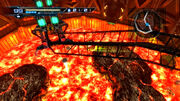
A superheated room in Metroid: Other M.
- Metroid: Other M is the first canon Metroid game where Samus Aran speaks, as she did not speak in Metroid Prime 3: Corruption. She had previously spoken through text during the intro of Super Metroid, at various intervals during Metroid Fusion, and in two instances in Metroid: Zero Mission. Samus had grunts of pain in the Metroid Prime Trilogy, and spoke in all of her taunts and in one of her victory poses as Zero Suit Samus in Super Smash Bros. Brawl.
- Yoshio Sakamoto claimed in a Super Metroid developer interview that he was the only person to know "where Samus' beauty mark is," which appears in Other M under the left side of her lip. A mole was also marked on concept art for Samus' face in Metroid Prime, but was not added to the model. [5]
- During the ending scene of the first Other M trailer, two sets of numbers briefly appeared in the upper-left hand corner as "2010" was displayed. The numbers showed "3/25" in what resembled a Missile Counter. At the time, many fans believed it was the release date (3/25/2010 or March 25, 2010).
Samus' new appearance in Other M.
- The title most likely refers to the character of Melissa Bergman, or "MB", implying that Melissa is a "Second Mother Brain." Other M can also be rearranged to form the word, "Mother"; the acronym of the title is "MOM".
- Other M is the first and currently the only Metroid game to receive a PEGI 16 rating, making it the highest-rated game in the series. (All games in the Prime series except Metroid Prime Pinball were only rated PEGI 12.)
- Other M is the first game in the Metroid series to have orchestrated music.
- Other M is the only game that forces Samus to run through superheated areas before obtaining protection from the Varia Feature. Due to this, superheated areas damage Samus by one energy unit instead of the traditional five.
- These sections somewhat resemble her runs on Dark Aether in Metroid Prime 2: Echoes, as she was forced to receive damage from the atmosphere constantly and had to find safe places to recover energy, and she later gains suits that protect her from the damage.
- Metroid: Other M is the third game in the Metroid series to not have a Special Ending based on clear time or completion percentage, the first being Metroid Prime Pinball (which didn't have an ending at all) and the second being Metroid Prime Hunters. The Zero Suit is playable during the countdown sequence, which is most likely intended to be the special ending.
- Strangely, at the beginning of the game, a scene of an unidentified area of space filled with the remains of machinery (possibly a space station) are shown floating, then are struck by meteors. It is unknown why this image was shown, since it does not seem to have any clear relevance to the storyline. It is possible that it is the remains of the BOTTLE SHIP, but the pieces do not seem to be numerous enough to form the whole BOTTLE SHIP, and it does not seem likely that there could be several meteors hitting the remains at once.
- It is possible the rubble is from Ceres Space Colony, as several pieces are curved and it is located near an asteroid belt.
- Metroid: Other M features one boss from each of the previously released 2-D titles: Ridley from Metroid/Metroid: Zero Mission, the Queen Metroid from Metroid II: Return of Samus, Phantoon from Super Metroid, and Nightmare from Metroid Fusion.
- In Metroid: Other M Samus's visor can change between transluscent and opaque. Samus seems to activate this feature at will; she will keep her visor transparent when examining something or talking to someone, but tint the visor when in battle or if she senses an enemy presences. When she gets to low health, the tint turns orange-yellow. In other games it is partially transparent most of the time.
- Like in Super Metroid, Other M features two nearly identical versions of Vs. Ridley, both for the fight with Ridley and for the escape sequence. In both games, the escape soundtrack has emergency siren sound effects added. The Other M version of the theme is called Nemesis Ridley.
- Other M was the third best-selling video game in Japan during its week of release with 45,398 copies sold, ranking it behind Wii Party and Monster Hunter Diary: Poka Poka Airu Village.
- The game was originally intended to be released on June 27, 2010, but was delayed.[30]
- Other M is the first game developed by Team Ninja that is unrelated to Dead or Alive or Ninja Gaiden.
- The music in the ending cutscene where Samus leaves the BOTTLE SHIP the first time is similar to the theme of Kalisto from the French film The Rain Children. It was composed by Didier Lockwood.[31]
See also
- Metroid: Other M Art Folio
- Metroid Mug 2010
- Play.com Exclusive Pre-Order Wii Remote Sticker
- Club Nintendo Original Calendar 2012
- Metroid: Other M Screensaver
- Metroid: Other M Premiere Edition
- Nintendo Official Guidebook for Metroid Other M
- TV Commercial :60 Spot
- Website Intro Movie
- Action Story
- List of Metroid: Other M trailers
- List of creatures in Metroid: Other M
- Metroid: Other M/Credits
External links
- Official Site
- Japanese Official Site
- Metroid: Other M on the Internet Movie Database
- Gallery of merchandise
Videos
- GameTrailers (420p, poor sound)
- GameVideos
- IGN (Poor sound)
- Trailer 2, Nintendo Everything
- Trailer 2 (Japanese version), GameTrailers
- Trailer 3
- Metroid: Other M NEWEST action trailer (720p HD)
- Metroid: Other M Commercial 1 (Japanese)
- Metroid: Other M Commercial 2 (Japanese)
- Metroid: Other M UK Commercial 1
- Metroid: Other M UK Commercial 2
- Metroid: Other M US Live Action Commercial
- "Metroid and Me" Retrospective
Gallery
For concept art, see Metroid: Other M's Gallery.
References
- ^ a b c Nintendo, Team Ninja, D-Rockets. Metroid: Other M (in Japanese). (Nintendo). Wii. Scene: staff credits. (September 2, 2010)
- ^ The News Team. Nintendo confirms delays - Metroid: Other M on Aug. 31st, Sin and Punishment 2 on June 27th, dates WiiWare/DSiWare titles. GoNintendo. Retrieved on 2010-04-23.
- ^ Metroid: Other M - Nintendo.com.au. Retrieved on 08-5-2010.
- ^ Metroid: Other M dated for Europe. Retrieved on 2010-07-08.
- ^ Japan: Metroid Other M Out Now On Wii U eShop. Retrieved on 08-17-2016.
- ^ Europe: Nintendo Downloads For March 31st. Retrieved on 2016-03-29.
- ^ Metroid: Other M blasts onto North American Wii U Virtual Consoles tomorrow. Retrieved on 08-12-2016.
- ^ http://www.metroid-database.com/features/nomsakamoto.php
- ^ http://gonintendo.com/viewstory.php?id=112527
- ^ http://metroid.com
- ^ Harris, Craig (27 August 2010). Metroid: Other M Review. IGN. Retrieved on 2010-08-28.
- ^ Heppe, Abbie (27 August 2010). Metroid: Other M for Wii - Reviews. G4. Retrieved on 2010-08-28.
- ^ http://gameinformer.com/b/news/archive/2010/08/24/game-informer-australia-s-metroid-other-m-review-different-than-us-version.aspx
- ^ Kollar, Phil (27 August 2010). Nintendo’s Team Ninja Team-Up Robs Metroid Of Its Character - Metroid: Other M. GameInformer. Retrieved on 2010-08-28.
- ^ McShea, Tom (27 August 2010). Metroid: Other M Review for Wii. GameSpot. Retrieved on 2010-08-28.
- ^ Metroid: Other M Video Game. GameTrailers. Retrieved on 2010-08-29.
- ^ Metroid: Other M review. GamesRadar. Retrieved on 2010-08-27.
- ^ Slate, Chris (October 2010). "Reviews: Evolution of the Species". Nintendo Power October 2010 (259): 84–87.
- ^ Template:Cite web url=http://www.thunderboltgames.com/review/metroid-other-m
- ^ http://www.gamerankings.com/browse.html?search=metroid&numrev=3&site=
- ^ http://www.metacritic.com/search/all/metroid/results?sort=score
- ^ http://www.gametrailers.com/video/most-disappointing-game-of-the/708650
- ^ http://www.gamesradar.com/the-anti-awards-2010/
- ^ http://www.gamesradar.com/the-top-7-games-you-dont-want-for-christmas-2010/
- ^ http://www.g4tv.com/thefeed/blog/post/709387/the-worst-games-of-the-year-from-attack-of-the-show/
- ^ http://www.g4tv.com/videos/50693/the-golden-mullet-awards-2010-metroid-other-m/
- ^ http://kotaku.com/5688617/nintendo-trying-to-figure-out-what-went-wrong-with-newest-metroid
- ^ Team Ninja's Yosuke Hayashi Talks Ninja Gaiden 3. G4 Media, Inc. (2011-09-21). Retrieved on 2011-11-10.
- ^ http://www.neogaf.com/forum/showthread.php?t=963700
- ^ Daan (February 24, 2010). Round-up NA Summit dates. Retrieved on 2010-01-29.
- ^ https://www.youtube.com/watch?v=I1DJ3biybY4






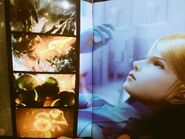



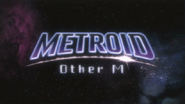

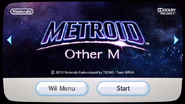
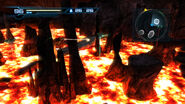
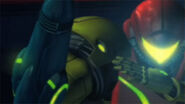
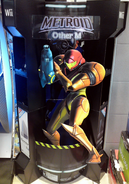
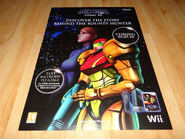







![Page 22 of Nintendo's 2011 company guide with Sakamoto and Samus.jpg (495 KB) Page 22 of Nintendo's 2011 company guide, handed out to prospective employees. This photo shows Sakamoto working on Other M.[1]](https://static.wikia.nocookie.net/metroid/images/e/e4/Page_22_of_Nintendo%27s_2011_company_guide_with_Sakamoto_and_Samus.jpg/revision/latest/scale-to-width-down/185?cb=20180118022209)